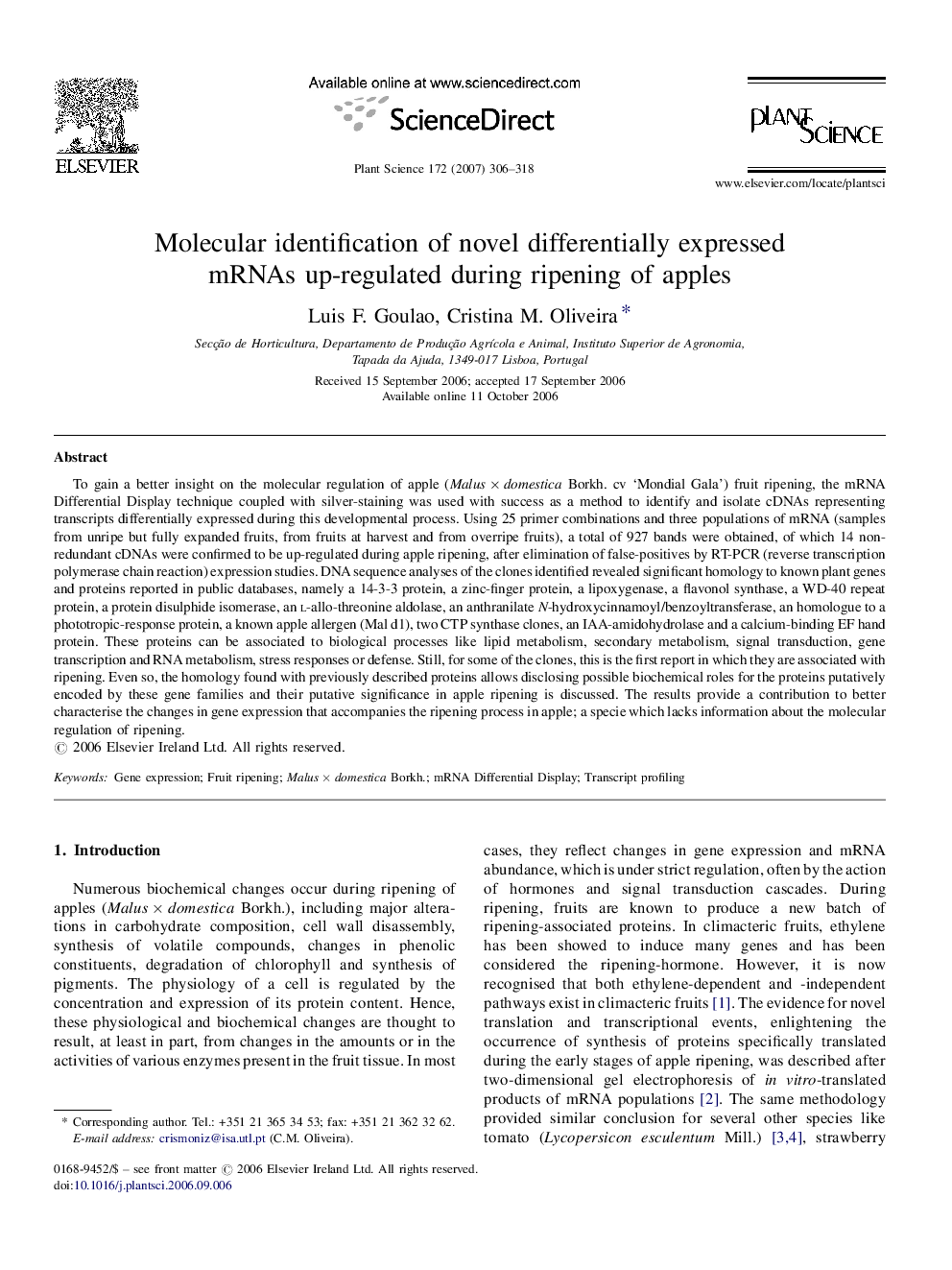| Article ID | Journal | Published Year | Pages | File Type |
|---|---|---|---|---|
| 2018379 | Plant Science | 2007 | 13 Pages |
To gain a better insight on the molecular regulation of apple (Malus × domestica Borkh. cv ‘Mondial Gala’) fruit ripening, the mRNA Differential Display technique coupled with silver-staining was used with success as a method to identify and isolate cDNAs representing transcripts differentially expressed during this developmental process. Using 25 primer combinations and three populations of mRNA (samples from unripe but fully expanded fruits, from fruits at harvest and from overripe fruits), a total of 927 bands were obtained, of which 14 non-redundant cDNAs were confirmed to be up-regulated during apple ripening, after elimination of false-positives by RT-PCR (reverse transcription polymerase chain reaction) expression studies. DNA sequence analyses of the clones identified revealed significant homology to known plant genes and proteins reported in public databases, namely a 14-3-3 protein, a zinc-finger protein, a lipoxygenase, a flavonol synthase, a WD-40 repeat protein, a protein disulphide isomerase, an l-allo-threonine aldolase, an anthranilate N-hydroxycinnamoyl/benzoyltransferase, an homologue to a phototropic-response protein, a known apple allergen (Mal d1), two CTP synthase clones, an IAA-amidohydrolase and a calcium-binding EF hand protein. These proteins can be associated to biological processes like lipid metabolism, secondary metabolism, signal transduction, gene transcription and RNA metabolism, stress responses or defense. Still, for some of the clones, this is the first report in which they are associated with ripening. Even so, the homology found with previously described proteins allows disclosing possible biochemical roles for the proteins putatively encoded by these gene families and their putative significance in apple ripening is discussed. The results provide a contribution to better characterise the changes in gene expression that accompanies the ripening process in apple; a specie which lacks information about the molecular regulation of ripening.
